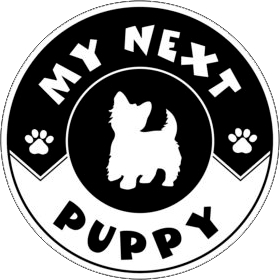-
Pomeranian
The Pomeranian is a cocky, animated companion with an extroverted personality. This compact little dog is an active toy breed with an alert character and fox-like expression. Today, the Pomeranian is a popular companion dog and competitive show dog. They can come in all colors, patterns, and variations although orange and red are the most popular.
History
The breed's name originally came from the historical region of Pomerania (now present-day Germany and Poland). Originally weighing nearly 30 pounds, the dog served as an able herder of sheep in its larger form. In 1888, Queen Victoria fell in love with a Pomeranian in Florence, Italy, and brought the specimen back to England, influencing its popularity dramatically.
Temperament
Pomeranians are very intelligent dogs that love to please. Because of their outgoing temperaments, they can be very good family dogs with the right training. Due to their small size, they don't require much exercise but are an energetic breed that needs attention from their people frequently. Pomeranians need a firm hand with training.
- Toy Group; AKC recognized in 1888.
- Ranging in size from 4 to 12 pounds, with the ideal weight for the show specimen being 4 to 9 pounds.
- Bred down from sled and herding dogs, companion.
Environment
- Apartment is fine because of small size
- Very active indoors.
- Be careful in hot weather because of their hair coat.
Exercise
- Daily light exercise.
Grooming
- Regular brushing because of long hair coat
- Moderate to heavy shedding.
-
Bloodhound
Described as a “unique looking dog in a baggy suit,” the Bloodhound is one of the oldest breeds of dogs that hunt by scent. Although affectionate, they can possess shy natures, sensitive to kindness or correction by their master. Colors of the Bloodhound include black and tan, liver and tan, and red, sometimes flecked with white. The actual term “Bloodhound” refers not to what the Bloodhound trails but instead refers to its status as the “blooded hound,” meaning aristocratic, since such great lengths were taken early on to keep the strain clean.
History
The Bloodhound made its appearance in Europe long before the Crusades when the first specimens were brought from Constantinople in two strains, black and white. Established in America for over a century, it proved early on to be a tireless worker for law enforcement, being so accurate that evidence trailed by a Bloodhound has been accepted in a court of law.
Temperament
While Bloodhounds are extremely affectionate, they are take-charge dogs, so it is important to be kind, but be the undisputed boss in your household. Bloodhounds should be groomed weekly to eliminate dead hair and facilitate a routine that will help them look, feel, and smell better.
- Hound Group; AKC recognized in 1885.
- Ranging in size from 23 to 27 inches tall at the shoulder.
- Scent tracker.
Environment
- Apartment is ok.
- Low activity indoors.
Exercise
- Moderate daily exercise.
Grooming
- Easy care.
- Use hound glove regularly.
- Infrequent bathing.
- Keep ears clean.
- Average shedding.
-
Bichon Frise
A cheerful, happy dog, the Bichon Frise is small and sturdy with a dark-eyed inquisitive expression and a plumed tail it carries merrily over the back. The breed is often compared to a cotton ball due to its curled double coat, which consists of a textured outer coat and a silky undercoat. The coat must be white but may have shadings of buff, cream, or apricot around the ears or on the body.
History
The Bichon Frise appeared in the 13th century as a descendent of the Water Spaniel. Traded by Spanish sailors and transported from continent to continent, the breed eventually became a favorite of those in the 16th-century French royal courts. The breed was also favored by the painters of the Spanish school, who often included them in their works. Although the breed's colorful past includes use as a circus dog, today the Bichon is enjoyed primarily as a companion animal.
Temperament
The Bichon is a naturally gentle, playful dog. He loves activity and requires regular exercise. His hair grows continually and does not shed, so extensive grooming is a must to prevent mats. Bichons also tend to be a good breed for allergy sufferers. They do very well with families and also with other dogs in the household. The Bichon Frise also trains very well with a firm hand!
- Non-Sporting Group; AKC recognized in 1972.
- Ideal size between 9 and 11 inches tall at the shoulder.
Environment
- Apartment is fine.
- Fairly active indoors.
Exercise
- moderate daily exercise.
Grooming
- Frequent professional grooming recommended.
- Little or no shedding.
- Easy on allergy sufferers.
-
Bernese Mountain Dog
One of four varieties of Swiss Mountain Dog, the Bernese Mountain Dog is the only variety that possesses a long, silky coat. A hardy dog that thrives in cold weather, the “Berner's” intelligence, strength and agility helped him perform the drafting and droving work in the mountainous region where he originated. Today, this versatile breed participates in conformation, obedience, carting, agility, tracking, herding and therapy work. Like the other Swiss breeds, they are tri-colored, with patches of black, rust and white.
History
The Bernese Mountain Dog (Berner Sennenhund) originated in Switzerland and is named for the Canton of Bern. Historically, Berners were used as general-purpose farm dogs. Their large, sturdy frames and calm, confident temperaments made them ideal for pulling carts to market, driving dairy cattle, watching the farm and acting as companions to farmers.
Temperament
Farm dogs by heritage, Berners need a moderate amount of exercise as well as consistent obedience training. As a double-coated breed, they also tend to shed, and so require regular brushing. Their gentle, easygoing manner and the need to be close to their people make them a good fit for families. Despite their large size, they do great with children!
- Working Group; AKC recognized in 1937.
- Ranging in size from 23 to 27 inches tall at the shoulder.
- Draft dog; drover; watchdog.
Environment
- Apartments? Not so much.
- Low activity indoors.
- Thrive in cold climates.
Exercise
- Short to moderate daily exercise.
Grooming
- Brush 2-3X/week.
- Seasonal shedding.
-
Yorkshire Terrier
Yorkshire Terrier puppies, affectionately known as “Yorkies,” offer big personalities in a small package. Though members of the Toy Group, they are terriers by nature and are brave, determined, investigative, and energetic. They have long, luxurious blue and tan coats and because of that, they are non-shedding. This portable pooch is one of the most popular breeds according to the AKC Registration Statistics.
History
Named for the English city from which they originally hail, Yorkshire Terriers were used in the nineteenth century to catch rats and other small rodents in clothing mills. Surprisingly enough, in its beginnings, the Yorkie belonged to the working class, especially the weavers; in fact, facetious comments were often made about how the dogs' fine, silky coats were the ultimate product of the looms. Eventually, the breed left the workforce and became a companion animal to families of European high society.
Temperament
Yorkies are easily adaptable to all surroundings and because of that, they travel well and make suitable pets for many homes. Due to their small size, they require limited exercise but need daily interaction with their people. Their long coat requires regular brushing. The Yorkie does better around older children that won't pull or yank on them. They tend to bond with one person, therefore extra socialization is needed in a family environment.
- Yorkshire Terrier Breed Standard.
- Toy Group.
General Appearance
That of a long-haired toy terrier whose blue and tan coat is parted on the face and from the base of the skull to the end of the tail and hangs evenly and quite straight down each side of the body. The body is neat, compact, and well proportioned. The dog's high head carriage and confident manner should give the appearance of vigor and self-importance. Grooming is recommended every six weeks or so. The most popular haircut for the Yorkie is called a 'puppy cut'.
Environment
- Apartment is fine because of small size
- Very active indoors.
Exercise
- Daily light exercise.
Grooming
- Regular brushing and combing because of non-shedding hair coat
- Periodic professional grooming recommended.
- Little to no shedding.
-
Pug
The Pug is well described by the phrase “multum in parvo” which means “a lot of dog in a small space.” They are recognized for their even-tempers, playful personalities, and their outgoing, loving dispositions. This square and cobby breed come in fawn, silver fawn, apricot fawn, or black, with a well-defined “mask” on his muzzle. A popular companion dog, the pug also excels in the show ring.
History
The Pug is one of the oldest breeds of dogs and has flourished since before 400 BC. Most researchers agree that the breed comes from Asia, due to its similarities to the Pekingese. China is the earliest known source for Pugs, where they were pets of the Buddhist monasteries in Tibet. The breed next appeared in Japan and Europe, becoming popular when Prince William II became the King of England. He owned Pugs and they became the fashionable breed for generations.
Temperament
The Pug's reason for living is to be near their people and to please them, and their sturdiness makes them a family favorite. They are comfortable in small apartments because they need minimal exercise, but the breed can adapt easily to all situations. The Pug sheds, but its short coat requires little grooming.
- Toy Group; AKC recognized in 1885.
- Weighting between 14 to 18 pounds.
- Companion dog.
Environment
- Apartment is fine.
- Low activity indoors.
- Thrive in moderate climates.
Exercise
- Daily light exercise.
Grooming
- Easy care.
- Heavy seasonal shedding.
-
Basset Hound
Instantly recognizable due to its big, heavy body, short legs, and long ears, the Basset Hound has proven itself to be a multi-purpose dog that excels in conformation, obedience, tracking, field trialing, and pack hunting. The breed is known for its strong hunting instinct and, if given the opportunity, will chase or follow a scent willingly. The Basset can be any hound color, which includes combinations of black, tan, white, red, and other colors.
History
The Basset Hound was originally developed in France as a trailer of small game that hunters could follow on foot. Bassets continued to achieve very notable popularity during the reign of Emperor Napoleon, and in 1880 Queen Alexandra kept Basset Hounds in the royal kennels. Marquis de Lafayette brought Basset Hounds, known for their impeccable sense of smell, to the United States as a gift to President George Washington to use in his hunting expeditions.
Temperament
The Basset's sweet, gentle disposition makes him a great companion and his short coat requires minimal grooming. The Basset is often great with children because they are not overly active. The Basset Hound also actively follows scents while outside so be prepared! They also get along very well with other dogs.
- Hound Group; AKC recognized in 1885.
- Height should not exceed 14 inches tall at the shoulder.
- Hunting dog; trailing dog.
Environment
- Apartment is ok.
- Low activity indoors.
- Average sized yard is fine.
Exercise
- Moderate daily exercise.
Grooming
- Easy care.
- Brush 1X/week.
- Keep ears clean.
'
-
Border Collie
The workaholic of the dog world, the Border Collie is the world's premier sheep herder, prized for its intelligence, extraordinary instinct and working ability. Medium-sized and athletic, the breed controls stock with stalking movement and an intense gaze known as “eye.” The Border Collie coat can be rough or smooth and includes any color in bi-color, tri-color, merle, sable, or solid patterns.
History
In the border country between Scotland and England, Border Collies (first classified as the “Scotch Sheep Dog”) were invaluable to shepherds by allowing them to maintain large flocks of sheep. The breed as we know it today has been around for more than 100 years. In the second half of the 19th century, Queen Victoria spotted a Border Collie and became an active enthusiast. At this point, the divergence between our modern Collie and the Border Collie began.
Temperament
This high-drive breed is extremely energetic and requires exercise beyond just a walk around the block or a romp in the yard. They thrive when they have a job to do and space to run. Due to their tendency to herd objects and people, they do best with mature, well-behaved children. They love their families, but maybe somewhat reserved with strangers. They are seasonal shedders and require regular brushing.
- Herding Group; AKC recognized in 1995.
- Ranging in size from 18 to 22 inches tall at the shoulder.
- Sheepherder.
Environment
- Apartment? Not so much.
- Highly active indoors.
- Love acreage.
Exercise
- Lots of exercise.
- Love to learn and train.
- Must stay active.
Grooming
- Regular brushing and combing.
- Average shedding.
- Infrequent bathing.
-
French Bulldog
Often described as “a clown in the cloak of a philosopher,” the French Bulldog originated as and continues to be used as a companion dog. The breed is small and muscular with a heavy bone structure, a smooth coat, a short face, and trademark “bat” ears. Prized for their affectionate natures and even dispositions, they are generally active and alert, but not unduly boisterous. Frenchies can be brindle, fawn, white, and brindle and white.
We love these guys so much, we even did a whole blog dedicated to the French Bulldog.
History
Lacemakers in 19th Century Nottingham, England selectively bred the early bulldog for a downsized or “toy” bulldog, for use as a lap pet. When the Industrial Revolution displaced some lacemakers to France, they took the dogs with them, and soon the “toy” bulldogs became popular in France, where wealthy Americans doing the Grand Tour saw and fell in love with them. In the late 1800s, these “toy bulldogs” became known as French Bulldogs.
“nbsp;
“nbsp;
Temperament
Frenchies are indoor dogs but require air conditioning in warm weather. While good at alerting their owners to danger (Look! The UPS Guy is coming!), their main role is that of lap warmer. The Frenchie requires minimal exercise and grooming.
- Non-Sporting Group; AKC recognized in 1898.
- Must weigh 28 pounds or less.
- Companion.
Environment
- Apartment is fine.
- Moderate activity indoors.
- Thrives in moderate climates.
Exercise
- Light daily exercise.
Grooming
- Easy care.
- Light brushing.
- Average shedding.
-
Akita
Large, powerful, and alert, Akitas are a working breed that originated in Japan. Dignified and courageous, the Akita today is popular in the show ring and also participates in performance and therapy work. The breed's thick double coat can be any color including white, brindle, or pinto. An Akita trademark is the plush tail that curls over his back.
History
One of seven breeds designated as a national monument in its native Japan, the Akita has been used as a versatile hunting dog there for many years. There is even a spiritual significance attached to the breed when a child is born in Japan, the family will receive a puppy as a statue signifying health, happiness, and long life. The Akita first arrived in the United States when Helen Keller brought one over in 1937.
Temperament
Although known to be a quiet dog (they are known as the “Silent Hunter” in Japan), the Akita has strong guarding instincts and will sound the alarm if an intruder breaks into their house. Their temperament can range from calm to bouncy and aggressive, so the breed should always be supervised around small children and other animals. They like to be “pack leader,” so obedience training is also necessary for a harmonious household. The breed will groom itself like a cat, but daily brushing is still necessary, as is daily exercise.
- Working Group; AKC recognized in 1972.
- Ranging in size from 24 to 28 inches tall at the shoulder.
- Bear hunter; guard dog.
Environment
- Apartment is ok if walked regularly.
- Thrives in large yard.
Exercise
- Moderate.
- Long walks.
Grooming
- Brush frequently with firm brush.
- Heavy shed 2X/year.
- Bathe only when necessary.

 Available Puppies
Available Puppies What People Are Saying
What People Are Saying